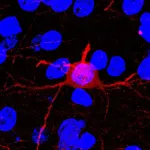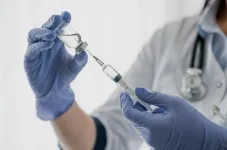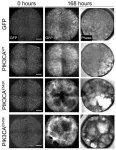(Press-News.org) BOSTON – As legislation in multiple states eases former restrictions around medical and recreational cannabis in the United States, an increasing proportion of the population reports use of the drug. Between 2016 and 2018, more than 22 percent of Massachusetts residents reported any prior cannabis use for medical or recreational reasons. However, little is known about cannabis use in patients who undergo surgery or interventional procedures, where cannabis use has important additional clinical implications.
In a new study published in The Lancet’s eClinical Medicine, researchers led by anesthesiologists at Beth Israel Medical Center (BIDMC) analyzed de-identified data from patients who underwent non-cardiac surgery in Boston between 2008 and 2020. The scientists found that cannabis users had a higher complexity of co-existing conditions overall, including mood disorders such as depression and substance use disorders. Patients with a diagnosed cannabis use disorder more often required advanced postprocedural healthcare – such as admission to an intensive care unit – compared to non-users. However, patients whose use of cannabis was not classified as a disorder had lower odds of requiring advanced healthcare after surgery compared to patients who never use cannabis.
“Our analysis revealed that cannabis use is very common and has substantially increased among patients undergoing surgery, reflecting trends in the general population; however, differential effects on postprocedural health care utilization were observed between patients with moderate non-medical cannabis use and patients with a cannabis use disorder,” said corresponding author Maximillian S. Schaefer, Director of the Center for Anesthesia Research Excellence at BIDMC. “We hope our data helps make clinicians aware of how different patterns of cannabis use might represent different patient populations, which in turn translates into distinct perioperative risk profiles.”
In this hospital registry study, Schaefer and colleagues analyzed de-identified data from 210,639 adult patients undergoing noncardiac surgery at BIDMC between January 2008 and June 2020. Non-medical cannabis use was identified before procedures during routine, structured interviews about past and ongoing habits of drug use, in accordance with the American Society of PeriAnesthesia Nursing recommendations. Patients with cannabis use disorder were identified through diagnostic codes.
Over the entire study period, the researchers found that more than 16,000 patients, or 7.7 percent, used cannabis prior to surgery, of which 14,045 (87 percent) were identified as non-medical users and 2,166 (13 percent) had a diagnosis of cannabis use disorder. Of all the patients undergoing surgery, a total of 24,516 patients, or 12 percent, required advanced post-procedural healthcare utilization, among which 1,465 patients self-identified as non-medical cannabis users, 418 patients presented with cannabis use disorder and 22,633 patients had no reported ongoing cannabis use.
Overall, patients who self-identified as cannabis users were on average younger, more often male, and more likely to suffer from depression, anxiety and schizoaffective disorders. Substance use disorders related to alcohol, cocaine, IV drugs, prescription medications and psychedelic drugs were more frequent in patients who used cannabis.
“As these comorbidities have been associated with increased complications including arrhythmias and sudden cardiac death after anesthesia, a history of cannabis use disorder might serve as an indicator of potentially complicating factor for patients undergoing anesthesia that in turn contribute to the requirement of higher-level healthcare utilization after surgery,” Schaefer said.
Compared to patients who did not use cannabis, patients with a diagnosis of cannabis use disorder had higher odds of requiring advanced post procedural healthcare utilization. Specifically, a diagnosis of cannabis use disorder was linked with higher odds of a 30-day hospital readmission, compared to patients who did not use cannabis.
By contrast, patients with reported ongoing non-medical cannabis use had lower odds of advanced post-procedural healthcare unit utilization compared to patients who did not use cannabis. Moreover, such use was linked to shorter hospital length of stay than patients who did not use cannabis. Over the course of the study period, the scientists saw the prevalence of cannabis use rise from 5 percent in 2008 to 14 percent by 2020 and observed higher rates of cannabis use among those undergoing surgery than previous studies reported. While the scientists acknowledge the discrepancy could be the result of regional consumption patterns, they suggest their inclusion of ongoing self-reported non-medical cannabis users based on structured pre-admission interviews paints a more accurate picture than findings that identified patients’ cannabis use on diagnostic codes alone.
“This cohort represents a distinctively different patient population of more general non-medical users,” said Schaefer. “These differential findings in patients who self-identified as ongoing, non-medical cannabis users without a diagnosis of disorder strongly suggest that future studies need to differentiate these two patient populations. Findings based on the identification of cannabis use from diagnostic codes alone might not be applicable to most mainstream cannabis users.”
Co-authors included first author Elena Ahrens, Luca J. Wachtendorf, Laetitia S. Chiarella, Sarah Ashrafian, Aiman Suleiman, Tim M. Tartler, Basit A. Azizi, Guangqing Chen, Amnon A. Berge, Denys Shay, Valerie Banner-Goodspeed, Haobo Ma, and Kevin P. Hill, of BIDMC; Bijan Teja, of University of Toronto; and Matthias Eikermann of Albert Einstein College of Medicine.
This work was supported by an unrestricted, philanthropic grant of Jeff and Judy Buzen. Hill has served as a consultant for Greenwich Biosciences and has received an honorarium from Walters-Klewer as an author. Schaefer received funding for investigator-initiated studies from Merck and Co which do not pertain to this manuscript. Schaefer received honoraria for presentations from Fisher and Paykel healthcare and Mindray medical information international limited period. All other authors declare no competing interests.
About Beth Israel Deaconess Medical Center
Beth Israel Deaconess Medical Center is a patient care, teaching and research affiliate of Harvard Medical School and consistently ranks as a national leader among independent hospitals in National Institutes of Health funding. BIDMC is the official hospital of the Boston Red Sox.
Beth Israel Deaconess Medical Center is a part of Beth Israel Lahey Health, a health care system that brings together academic medical centers and teaching hospitals, community and specialty hospitals, more than 4,800 physicians and 36,000 employees in a shared mission to expand access to great care and advance the science and practice of medicine through groundbreaking research and education.
END
First-of-its-kind study examines the impact of cannabis use on surgical patients' post-procedure healthcare needs
Cannabis use among surgical patients tripled in Massachusetts between 2008 and 2020; one in seven patients report use, study finds
2023-02-25
ELSE PRESS RELEASES FROM THIS DATE:
New method creates material that could create the next generation of solar cells
2023-02-25
UNIVERSITY PARK, Pa. — Perovskites, a family of materials with unique electric properties, show promise for use in a variety fields, including next-generation solar cells. A Penn State-led team of scientists created a new process to fabricate large perovskite devices that is more cost- and time-effective than previously possible and that they said may accelerate future materials discovery.
“This method we developed allows us to easily create very large bulk samples within several minutes, rather than days or weeks using traditional methods,” said Luyao Zheng, a postdoctoral researcher in the Department of Materials Science at Penn State and lead author on the ...
PETA scientists’ roadmap to animal-free research gets COVID-era update
2023-02-25
Washington — PETA scientists have just released a new edition of the groundbreaking Research Modernization Deal (RMD), the world’s first comprehensive plan for phasing out the use of animals in experimentation. The update is packed with new, cutting-edge information and reflects the latest scientific developments and regulatory changes since the RMD was first introduced in 2018.
The RMD provides detailed information about the pressing need to transition toward human-relevant research, and this new edition outlines non-animal methods for studying COVID-19. It also ...
Excess weight, obesity more deadly than previously believed
2023-02-25
Excess weight or obesity boosts risk of death by anywhere from 22% to 91%—significantly more than previously believed—while the mortality risk of being slightly underweight has likely been overestimated, according to new CU Boulder research.
The findings, published Feb. 9 in the journal Population Studies, counter prevailing wisdom that excess weight boosts mortality risk only in extreme cases.
The statistical analysis of nearly 18,000 people also shines a light on the pitfalls of using ...
Clues about the northeast’s past and future climate from plant fossils
2023-02-25
Ancient climates can help us understand the past, but also the future. 23 million years ago, in a time called the Miocene Epoch, Connecticut was around five to six degrees warmer than today and located roughly where Long Island is now. By the end of the Miocene, around five million years ago the earth had gradually cooled, Antarctica was glaciated, and there was some Arctic ice as well.
This cooling scenario moved in the opposite direction of today’s changing climate. One difference UConn Department of Earth Sciences Assistant Professor in Residence Tammo Reichgelt points out is that in the past, these changes happened gradually, spaced ...
A new epigenetic brain defense against recurrence of opioid use
2023-02-25
Substance use disorder (SUD) is an extremely difficult disorder to overcome, and many individuals with SUD return to regular use after repeated attempts to quit.
A return to regular drug use can be caused by the body’s physical dependence on the drug as well as experiences associated with prior drug use. Exactly how these drug associations are formed in the brain and how they trigger a return to drug use remain unclear.
“Individuals make long-lasting associations between the euphoric experience of the drug and the people, places and things associated with drug use,” said Christopher Cowan, Ph.D. professor in the Department ...
Markey Cancer Center study shows potential for new radiopharmaceutical cancer treatment
2023-02-24
LEXINGTON, Ky. (Feb. 24, 2023) — A recent University of Kentucky Markey Cancer Center study suggests a new radiopharmaceutical compound may be a viable treatment option for patients with advanced cervical cancer.
The study, led by UK Markey Cancer Center radiation oncologist Charles Kunos, M.D., and published in Frontiers in Oncology, validates that the radioactive drug 212Pb-DOTAM-GRPR1 may be useful in the treatment of persistent, recurrent, or metastatic cervical cancer.
Radiopharmaceuticals are expected to play ...
A mysterious object is being dragged into the supermassive black hole at the Milky Way’s center
2023-02-24
For two decades, scientists have observed an elongated object named X7 near the supermassive black hole at the center of the Milky Way and wondered what it was. Was it pulled off a larger structure nearby? Was its unusual form the result of stellar winds or was it shaped by jets of particles from the black hole?
Now, having examined the evolution of X7 using 20 years of data gathered by the Galactic Center Orbit Inintiative, astronomers from the UCLA Galactic Center Group and the Keck Observatory propose that it could be a cloud of dust and gas that was ejected during the collision of two stars.
Over time, they report, X7 has stretched, and it is being pulled apart ...
How a new blood-vessel-on-a-chip can help researchers further understand vascular malformations
2023-02-24
CHAPEL HILL, N.C. – Our bodies are made up of 60,000 miles of complex pipes that play a vital role in transporting nutrients throughout our bodies, performing waste disposal, and supplying our organs with fresh oxygen and blood.
Vascular malformations (VMs) are a group of rare genetic disorders that causes an abnormal formation of veins, arteries, capillaries, or lymphatic vessels at birth. VMs can interfere with the duties of our precious pipes by causing blockages, poor drainage, and the formation of cysts and tangles.
To address a need for further study, William Polacheck, PhD, an assistant professor at the ...
CHOP researchers identify molecules that optimize immune presentation of antigens across the human population
2023-02-24
Philadelphia, February 24, 2023—Researchers at Children’s Hospital of Philadelphia (CHOP) have identified variants of a chaperone molecule that optimizes the binding and presentation of foreign antigens across the human population, which could open the door to numerous applications where robust presentation to the immune system is important, including cell therapy and immunization. The findings were published today in Science Advances.
Class I major histocompatibility complex (MHC-I) proteins are ...
Researchers find several oceanic bottom circulation collapses in the past 4.7 million years
2023-02-24
Antarctic bottom water (AABW) covers more than two-thirds of the global ocean bottom, and its formation has recently decreased. However, its long-term variability has not been well understood.
Researchers led by Prof. DENG Chenglong from the Institute of Geology and Geophysics (IGG) of the Chinese Academy of Sciences (CAS) and their collaborators have reconstructed AABW history back to approximately 4.7 million years ago (mya). They found that AABW has collapsed several times and such collapses might have induced moisture transport to fuel the Northern Hemisphere ...
LAST 30 PRESS RELEASES:
Reducing social isolation protects the brain in later life
Keeping the heart healthy increases longevity even after cancer
Young adults commonly mix cannabis with nicotine and tobacco
Comprehensive review illuminates tau protein's dual nature in brain health, disease, and emerging psychiatric connections
Book prepares K-12 leaders for the next public health crisis
Storms in the Southern Ocean mitigates global warming
Seals on the move: Research reveals key data for offshore development and international ecology
Sports injuries sustained during your period might be more severe
World's first successful 2 Tbit/s free-space optical communication using small optical terminals mountable on satellites and HAPS
Can intimate relationships affect your heart? New study says ‘yes’
Scalable and healable gradient textiles for multi‑scenario radiative cooling via bicomponent blow spinning
Research shows informed traders never let a good climate crisis go to waste
Intelligent XGBoost framework enhances asphalt pavement skid resistance assessment
Dual-function biomaterials for postoperative osteosarcoma: Tumor suppression and bone regeneration
New framework reveals where transport emissions concentrate in Singapore
NTP-enhanced lattice oxygen activation in Ce-Co catalysts for low-temperature soot combustion
Synergistic interface engineering in Cu-Zn-Ce catalysts for efficient CO2 hydrogenation to methanol
COVID-19 leaves a lasting mark on the human brain
Scientists use ultrasound to soften and treat cancer tumors without damaging healthy tissue
Community swimming program for Black youth boosts skills, sense of belonging, study finds
Specific depressive symptoms in midlife linked to increased dementia risk
An ‘illuminating’ design sheds light on cholesterol
Who is more likely to get long COVID?
Study showcases resilience and rapid growth of “living rocks”
Naval Research Lab diver earns Office of Naval Research 2025 Sailor of the Year
New Mayo-led study establishes practical definition for rapidly progressive dementia
Fossil fuel industry’s “climate false solutions” reinforce its power and aggravate environmental injustice
Researchers reveal bias in a widely used measure of algorithm performance
Alcohol causes cancer. A study from IOCB Prague confirms damage to DNA and shows how cells defend against it
Hidden viruses in wastewater treatment may shape public health risks, study finds
[Press-News.org] First-of-its-kind study examines the impact of cannabis use on surgical patients' post-procedure healthcare needsCannabis use among surgical patients tripled in Massachusetts between 2008 and 2020; one in seven patients report use, study finds




